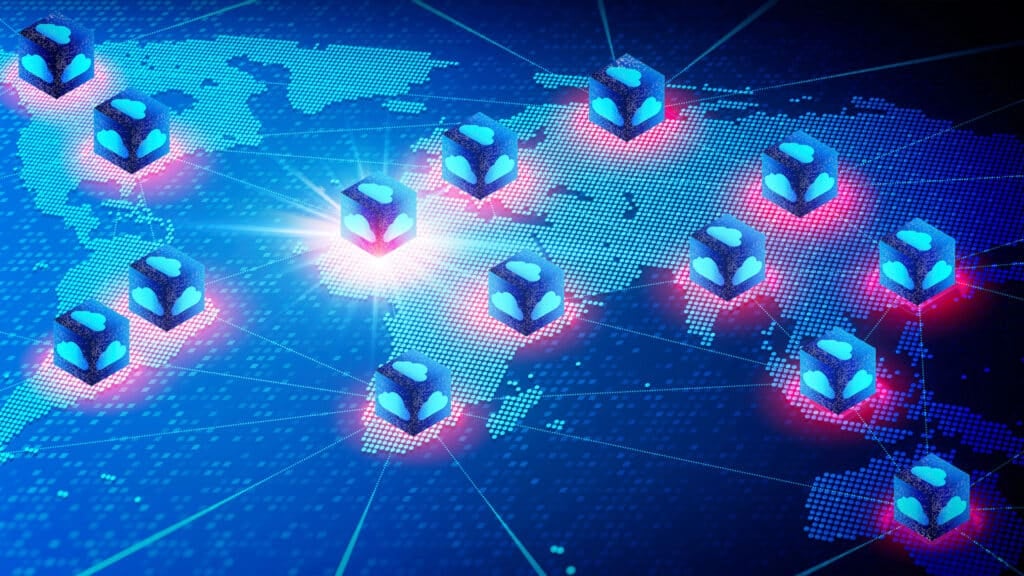Analyst(s): Nick Patience, Tiffani Bova
Publication Date: December 18, 2024
Salesforce reveals Agentforce 2.0, a digital labor platform that promises to revolutionize enterprise productivity by addressing labor shortages while enhancing personalized insights and analytics. Early adopters report 40% improvement over traditional chatbots.
What is Covered in this Article:
- How Salesforce is positioning Agentforce within the evolution of enterprise AI, from predictive analytics to autonomous agents capable of complex decision-making.
- Overview of the platform’s capabilities, including pre-built skills, Slack integration, and the enhanced Atlas reasoning engine that powers its AI capabilities.
- An examination of early customer adoption metrics, including case studies demonstrating 40% improvement over traditional chatbots and 83% case resolution rates.
- Analysis of how Agentforce 2.0 addresses critical business challenges such as labor shortages and productivity issues, with specific focus on reducing the 41% of time spent on low-value tasks.
The News: Salesforce has announced Agentforce 2.0 which it is pitching as its new “digital labor platform” integrating AI capabilities across the entire Salesforce ecosystem, including Slack. The platform features pre-built skills for various business functions, deep Slack integration, and enhanced Atlas reasoning capabilities. Agentforce 2.0 represents what Salesforce terms the “third wave of AI,” moving beyond predictive analytics and copilots to autonomous agents supporting multiple use cases.
Salesforce Pitches New Agentforce 2.0 as a Digital Labor Platform
Analyst Take: Salesforce’s introduction of Agentforce 2.0 marks the next stage in Salesforce’s rapid development of an agentic AI framework. It claims to address the problem of businesses being overwhelmed by the colliding forces of poor productivity, staff burnout and labor shortages on one side and customers’ pursuit of the most timely and personalized customer service with limited lag time to resolution on the other. There’s a clear business case to automate low value repetitive tasks and allow employees the opportunity to work on more high value, client facing opportunities. However, the implementation challenges ahead could be significant.
Salesforce is the quickest out of the gate among its enterprise application vendor rivals to embrace agentic AI, with the exception of Microsoft. Salesforce founder and CEO Marc Benioff has been vocal in contrasting their approaches on social media – Microsoft copilots that support humans compared to a Salesforce platform to build agents based on the company’s data agents that automate tasks.
The Integration Advantage
Salesforce bought Mulesoft in 2018 for its API development and integration features, which it turns out is a key requirement for this type of agentic platform. It means it can integrate with most applications and now add agents to them. In coming releases in the next couple of months, it will enable APIs to be turned into actions and be made available within Agentforce. Agents can be assembled using new pre-built skills that are pre-built workflows such as sales coaching, field asset management, and commerce management, among others. These templates give users 70-80% of what they need, says Salesforce.
Salesforce is going big on the digital labor term (one that was associated with the not entirely successful notion of Robotic Process Automation in the past). It reckons all departments within organizations can benefit from this digital labor. In sales – sales coaching, account management, and lead generation, in service – field service scheduling and work order assistants, in HR – interview scheduling and in finance – budget forecasting and fraud escalation, to name a few.
Slack is another key integration for Salesforce Agentforce. New in version 2.0, users will be able to communicate with agents via direct messages and in Slack channels, use conversation data with Slack Enterprise Search and extend Agentforce with pre-built Slack actions. Agentforce will be able to take actions on behalf of teammates based on a set of rules and conditions. All this comes with general availability in January 2025.
At the heart of Agentforce is the Atlas reasoning engine, built by the Salesforce AI Research team. According to Salesforce, with version 2.0, Answers are improved using a tool called Advanced Retriever, metadata-powered Retrieval Augmented Generation (RAG) comes with Enriched Indexes, and a tool called Inline Citation improves accuracy and transparency of responses. All initial queries are channeled through the atlas reasoning engine and now some of the questions that can be asked of it are more sophisticated than in version 1.0 so that complex questions containing jargon about taxation or other similar complicated topics can now be addressed. Agentforce sits on the Salesforce Data Cloud, which has been enhanced with new connectors to unstructured data sources from the September acquisition of Israeli company Zoomin.
Early Customer Success
Recruitment company Adecco Group is faced with the challenge of 300 million candidates submitting resumes each year, making it very challenging to have humans deal with every query the candidates will have. Although no metrics have been given by Salesforce or its client in this case, Adecco says Agentforce will help with tasks such as initial resume reviews and recommendations for open positions as well as things such as interview rescheduling. Publisher Wiley says Agentforce outperforms its old chatbot by 40%, though the details aren’t clear as to what that means. Salesforce is using Agentforce on its own support site, and it has handled 32,000 conversations per week with 83% of cases being resolved by Agentforce, resulting in 50% fewer escalations to Tier 2 support teams.
These numbers demonstrate a semblance of real-world viability. However, organizations should note that these results come from early adopters with likely significant implementation support. The true test will be how well Agentforce performs in diverse organizational contexts, particularly in industries with complex regulatory requirements or unique business processes. The platform’s ability to reduce burnout while maintaining customer satisfaction levels will be crucial for long-term ROI justification.
Agentforce 2.0 costs $2 per conversation. For the first application – Agentforce Service Agent – one conversation refers to the customer conversing back and forth within 24 hours hours is one conversation for service. Future versions focused on sales teams will have similar but slightly different definitions of a conversation, but will remain at $2 each.
What to Watch:
- Competitor response from major cloud providers and enterprise software vendors, particularly Microsoft, Google, and AWS, who are accelerating their own enterprise AI agent development. Watch for potential partnerships or acquisitions in this space.
- Integration challenges with legacy systems and data sources, especially for organizations with complex tech stacks or those heavily invested in non-Salesforce ecosystems. The success of Salesforce’s MuleSoft integration capabilities will be crucial here.
- Regulatory compliance and data governance implications, particularly in highly regulated industries such as healthcare and financial services. The implementation of “Zero Copy & RAG” and enhanced Atlas reasoning will need to prove their effectiveness in maintaining data privacy and security standards.
- Impact on workforce dynamics and potential resistance to AI adoption, particularly in industries where human interaction is highly valued. Monitor how organizations balance automation with maintaining personal touch in customer interactions.
See the complete press release on Agentforce 2.0 on Salesforce website.
Disclosure: The Futurum Group is a research and advisory firm that engages or has engaged in research, analysis, and advisory services with many technology companies, including those mentioned in this article. The author does not hold any equity positions with any company mentioned in this article.
Analysis and opinions expressed herein are specific to the analyst individually and data and other information that might have been provided for validation, not those of The Futurum Group as a whole.
Other Insights from The Futurum Group:
Will Outcomes-Based Pricing Become the Preferred Pricing Model for AI Agents in 2025?
Salesforce Q3 FY25: Agentforce Momentum, AI Advancements, and Strategic Insights
Author Information
Nick Patience is VP and Practice Lead for AI Platforms at The Futurum Group. Nick is a thought leader on AI development, deployment, and adoption - an area he has researched for 25 years. Before Futurum, Nick was a Managing Analyst with S&P Global Market Intelligence, responsible for 451 Research’s coverage of Data, AI, Analytics, Information Security, and Risk. Nick became part of S&P Global through its 2019 acquisition of 451 Research, a pioneering analyst firm that Nick co-founded in 1999. He is a sought-after speaker and advisor, known for his expertise in the drivers of AI adoption, industry use cases, and the infrastructure behind its development and deployment. Nick also spent three years as a product marketing lead at Recommind (now part of OpenText), a machine learning-driven eDiscovery software company. Nick is based in London.
Tiffani Bova is Chief Strategy and Research Officer at The Futurum Group.
Ranked for the last six years in the Top 50 Business Thinkers in the world by Thinkers50, Tiffani Bova is a thought leader who Forbes says “reshapes our perception of growth.”
As both a practitioner and academic she offers a unique perspective and has helped lead the tech industry through several evolutions over her nearly 30-year career as Salesforce’s former Growth and Innovation Evangelist, and previously as a Distinguished Analyst and Research Fellow at Gartner and a sales, marketing and customer service executive for start-ups and Fortune 500 companies. She is the author of two Wall Street Journal bestsellers: GrowthIQ and The Experience Mindset.




